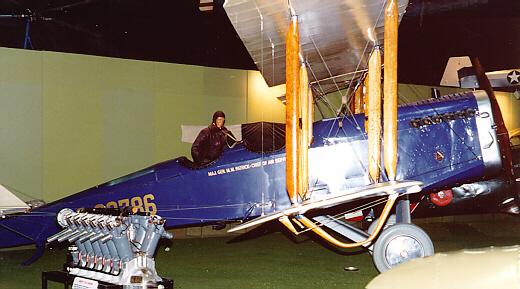|
Although the DH-4 was originally a British combat airplane, it was redesigned in the U.S. in 1917 for the famed Liberty engine. The airplane was used by the U.S. Air Service in France primarily for observation, day bombing, and artillery spotting. It carried the nickname "The Flaming Coffin" because of the supposed ease with which it could be shot down in flames but, in reality, only eight of the 33 DH-4s lost in combat by the U.S. burned as they fell. This was no greater percentage than for the French and British-built airplanes used by the A.E.F. in France. The DH-4 was the only U.S.-built airplane to get into combat during WW I. By the Armistice, 3,431 had been delivered to the Air Service, most of which were built by the Dayton-Wright Airplane Co. Of these, 1,213 had been shipped to France and 417 had gotten into combat. |
 |
|
|
Following WW I, the DH-4 continued in use with the Army for a decade. More than 1,500 were rebuilt for increased strength and some were modified for carrying the airmail in the 1920s. The DH-4 on display is on loan from the Frederick C. Crawford Auto-Aviation Museum, Cleveland, Ohio. It is painted in the special colors of the DH-4B of Maj. Gen. Mason M. Patrick, Chief of Air Service, U.S. Army from Oct. 1921 to Dec. 1927. SPECIFICATIONS Span: 43 ft. 6 in. Length: 30 ft. 6 in. Height: 10 ft. 4 in. Weight: 3,557 lbs. loaded Armament: Two .30-cal. Marlin machine guns in the nose and two .30-cal. Lewis machine guns in the rear; 220 lbs. of bombs. Engine: Liberty 12 of 421 hp. Crew: Two PERFORMANCE Maximum speed: 128 mph. Cruising speed: 90 mph. Range: 400 miles Service Ceiling: 19,600 ft. Cost: $11,250
|
||